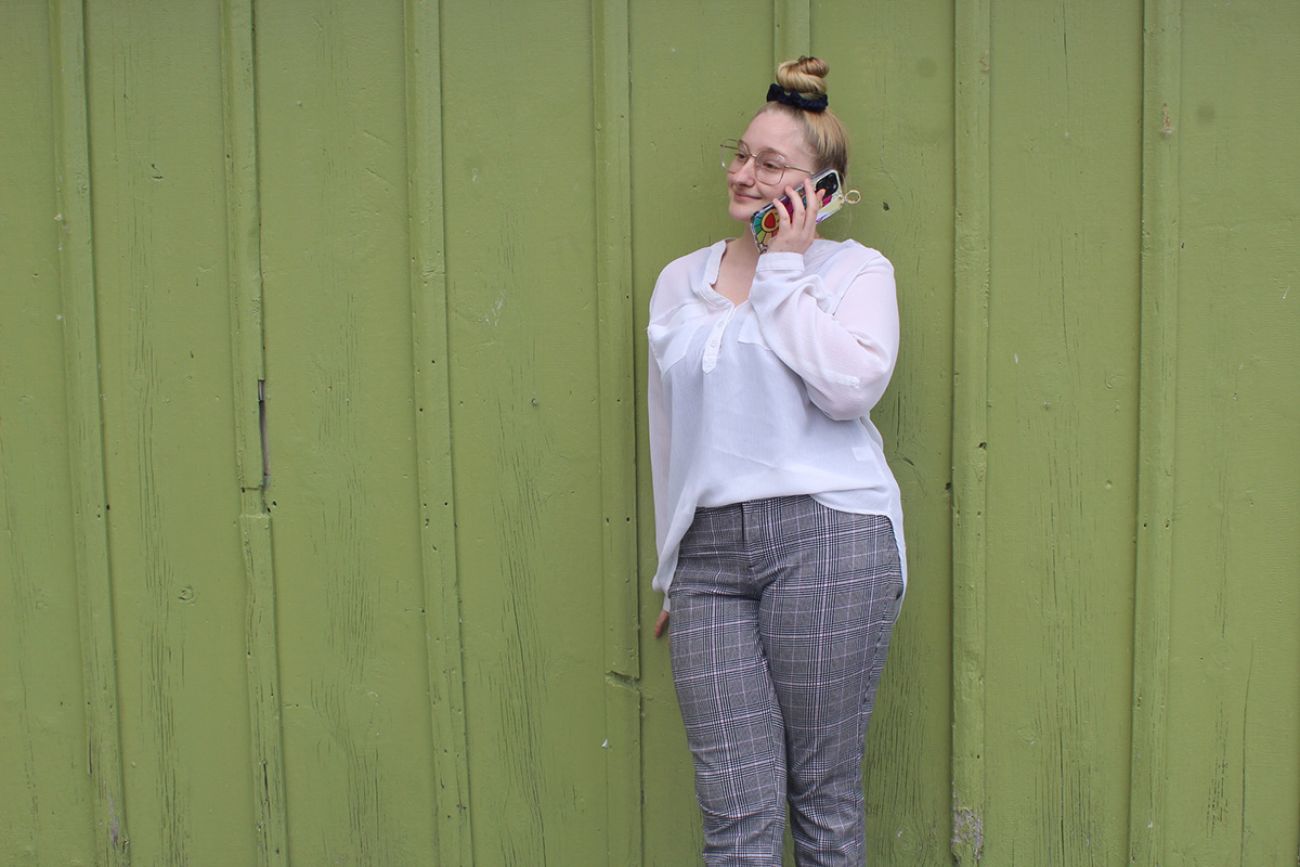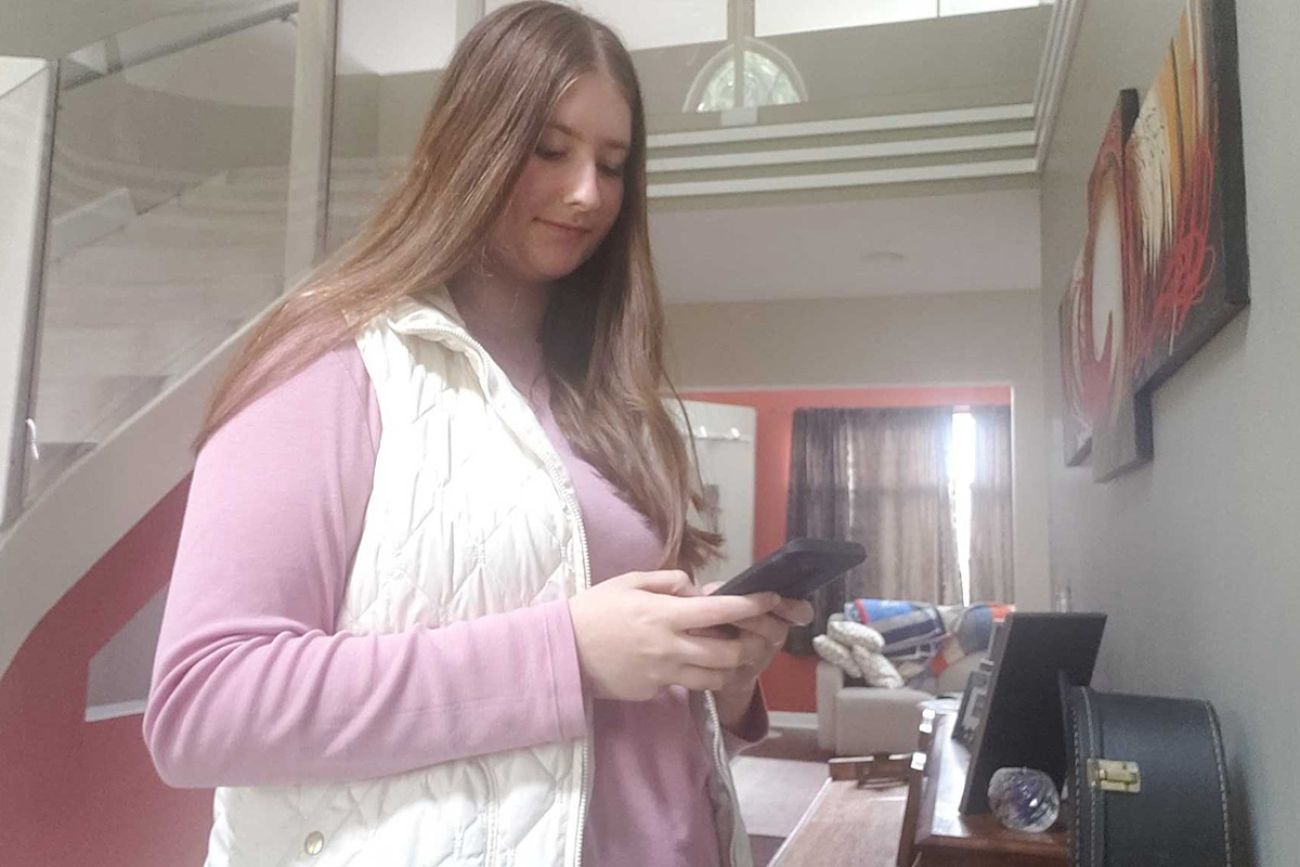Surgeon general warns about social media, teens: Will Michigan listen?

- The surgeon general put out an advisory on the dangers of social media usage in adolescents in May
- 95 percent of youth ages 13-17 use social media, and one-third report that they use the platforms ‘almost constantly.’ The average teen spends three and a half hours on social media every day
- Those who use social media for more than three hours a day double the risk of experiencing symptoms of poor mental health, according to research
A few weeks ago, Lyric Fountain, a sophomore at Woodhaven High School in southeast Michigan, started research on the negative effects of social media for her English class.
Fountain has always been careful with social media, and this assignment served as an opportunity to further explore her concerns.
At the same time, Surgeon General Dr. Vivek Murthy was putting together his advisory on the dangers of social media for adolescents.
The advisory first touched on how much adolescents are using these platforms, citing research that found that 95 percent of youth ages 13-17 use social media, with one-third saying they use it “almost constantly.”
Emilee Larabell, a junior at Woodhaven High School, says that she uses Instagram, Tik Tok, and Snapchat two to three hours a day during the week and three to four hours a day on the weekends. Larabell said that social media fills the in-betweens of her days, using it “when I’m bored and there’s nothing else to do.”
Scanning through social media when bored may sound benign enough, but it’s not, according to Murthy, who notes these platforms are harmful because of the type of content available, and also because of the way they are used.
“Children are exposed to harmful content on social media, ranging from violent and sexual content, to bullying and harassment,” Murthy said in a press release. “And for too many children, social media use is compromising their sleep and valuable in-person time with family and friends.”
More than three hours doubles the risk
The advisory bases its findings on recent research, which has suggested that those who spend more than three hours a day on social media double the risk of having poor mental health.
To Leah Ewald, a mental health therapist at Pine Rest’s Forest Hills Clinic in Grand Rapids, the content available on the internet is especially harmful to vulnerable adolescents who are already struggling.
”Kids that are struggling with mental health issues are going online to find ways that are unhealthy to cope with that,” Ewald said.
The advisory noted that survey results from adolescents show that 64 percent of the youth are ‘often’ or ‘sometimes’ exposed to hate-based content on social media.
Dr. Hannah Schacter, an assistant professor of psychology at Wayne State University said that even appropriate content could be causing harm.
“I think that being on social media platforms, where you’re seeing celebrities and classmates and friends presenting their best selves … can create some negative social comparisons or unrealistic beauty standards that can contribute to low self-esteem,” Schacter said.
Schacter also noted that social media can be harmful when it interferes with other healthy activities.
“We do have a ton of research to suggest that sleep is critical for our health, both mentally and physically, and so you can imagine that when teenagers are up all night on social media and it’s interfering with their ability to sleep then we begin to get concerned about health risk.” Schacter said.
‘A bit overstated’
However, Schacter did have a word of caution on the advisory.
“One thing I found to be maybe a bit overstated was the amount of evidence that we do have supporting this idea that social media is definitively harmful,” Schacter said. “We unfortunately don’t have a lot of scientific evidence based on experimental or causal data.”
The advisory does note that there are some positives to social media. Adolescents report that social media helps them feel more accepted, offers support, allows them to show off their creativity, and helps them connect with others.
“I feel like social media has kind of made people more accepting and open-minded about things,” Larabell said.
But Larabell also came to the conclusion that “too much of (social media) can start to negatively impact people.” The advisory attempts to answer this question, calling on parents to help limit their children’s social media use through a multitude of ways, including establishing tech-free zones within the house.
Start slow
According to Barbara Flis, the founder of Parent Action for Healthy Kids, an organization that helps improve family engagement in communities, the key to limiting usage is to take small steps.
“When you make a big proclamation that you’re going to do something, it usually doesn’t stick,” Flis said. “The best way is to go slow, go a little bit at a time, let the unhealthy behaviors fall off, check in with yourself, see how you’re feeling about it.”
The advisory calls on parents and guardians to teach their children about the dangers of social media, but Flis encourages parents to learn themselves.
“Let (your kids) tell you what’s on their mind,” Flis said. “Not with the judging, and the giving advice, just listen to them.”
Fountain and Larabell’s parents limit their time on social media, but both kids said that they understand where their parents are coming from. According to Flis, this is because adolescents understand the dangerous parts of social media.
“When kids do the research, and they understand that they’re being marketed to, when they learn that they’re being manipulated … they hate it, and they will turn on you in a heartbeat,” Flis said.
But many parents don’t limit their kids’ social media. According to research done by Mott Children’s Hospital, only 56 percent of parents reported using privacy settings to limit their children's usage of apps. Those who said they were having difficulties setting limits on social media for their children said that setting limits was too time-consuming, they were unable to find parental controls and that children often found their way around controls.
But parents aren’t the only ones responsible for limiting the youth’s screen time. Larabell and Fountain both take measures to limit the amount of time they spend online by utilizing parental controls on themselves or even deleting the apps entirely.

Companies should do their part
The advisory also calls on tech companies, such as Facebook and ByteDance, the app that owns TikTok, to address the impact of their products. But, Schachter doesn’t have much hope that they’ll respond to that call.
“Any of the measures that technology companies or app developers could take to help mitigate some of their risks, they may also see as undermining the maximum possible reach and success of their apps,” Schacter said.
Schacter is talking primarily about measures that apps can take to help get people off their apps to prevent overuse.
That, according to Flis, is where policy comes in. Flis says that regulations help parents put restrictions on their children because they “level the playing field,” meaning that one child doesn’t have different constraints than the next, and parents have a reason to enforce limits on screen time.
‘Help along the way’
As people begin to analyze and understand the consequences of social media use on younger generations, they might recall arguments of the past, and wonder if this is similar to parents being concerned about their kids listening to rock-and-roll.
“There is some of that,” Flis said. “It’s just got to go through the sifting process … Because I trust in our young people … that they can figure it out, but we can help along the way.”
Larabell couldn’t agree more.
“I don’t think social media is inherently bad,” Larabell said. “There are a lot of bad aspects involved with social media, but I also think there are a lot of great aspects that are involved. There just needs to be a limit and boundaries with teenagers and social media.”
See what new members are saying about why they donated to Bridge Michigan:
- “In order for this information to be accurate and unbiased it must be underwritten by its readers, not by special interests.” - Larry S.
- “Not many other media sources report on the topics Bridge does.” - Susan B.
- “Your journalism is outstanding and rare these days.” - Mark S.
If you want to ensure the future of nonpartisan, nonprofit Michigan journalism, please become a member today. You, too, will be asked why you donated and maybe we'll feature your quote next time!




